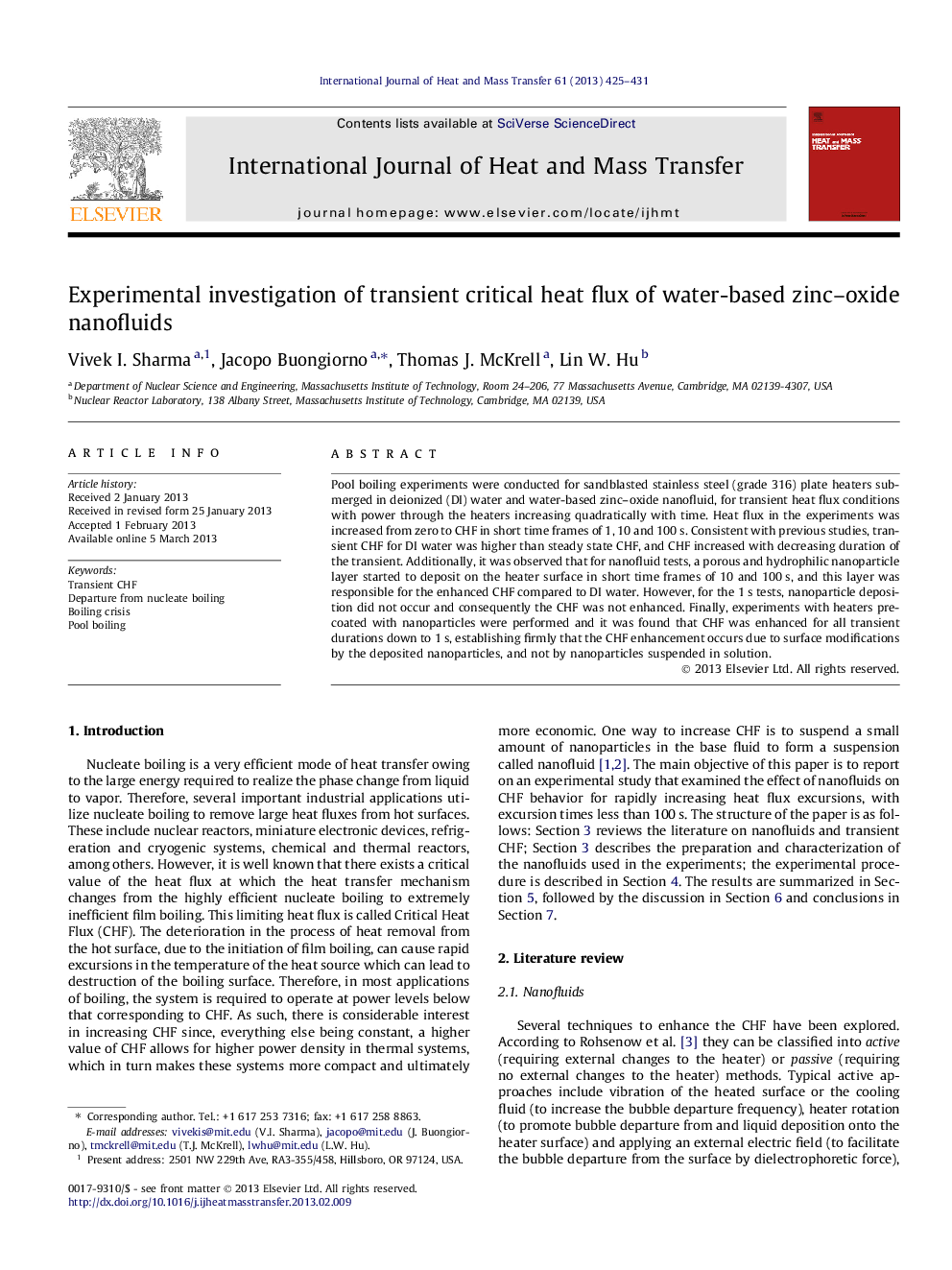| Article ID | Journal | Published Year | Pages | File Type |
|---|---|---|---|---|
| 7058931 | International Journal of Heat and Mass Transfer | 2013 | 7 Pages |
Abstract
Pool boiling experiments were conducted for sandblasted stainless steel (grade 316) plate heaters submerged in deionized (DI) water and water-based zinc-oxide nanofluid, for transient heat flux conditions with power through the heaters increasing quadratically with time. Heat flux in the experiments was increased from zero to CHF in short time frames of 1, 10 and 100Â s. Consistent with previous studies, transient CHF for DI water was higher than steady state CHF, and CHF increased with decreasing duration of the transient. Additionally, it was observed that for nanofluid tests, a porous and hydrophilic nanoparticle layer started to deposit on the heater surface in short time frames of 10 and 100Â s, and this layer was responsible for the enhanced CHF compared to DI water. However, for the 1Â s tests, nanoparticle deposition did not occur and consequently the CHF was not enhanced. Finally, experiments with heaters pre-coated with nanoparticles were performed and it was found that CHF was enhanced for all transient durations down to 1Â s, establishing firmly that the CHF enhancement occurs due to surface modifications by the deposited nanoparticles, and not by nanoparticles suspended in solution.
Related Topics
Physical Sciences and Engineering
Chemical Engineering
Fluid Flow and Transfer Processes
Authors
Vivek I. Sharma, Jacopo Buongiorno, Thomas J. McKrell, Lin W. Hu,
